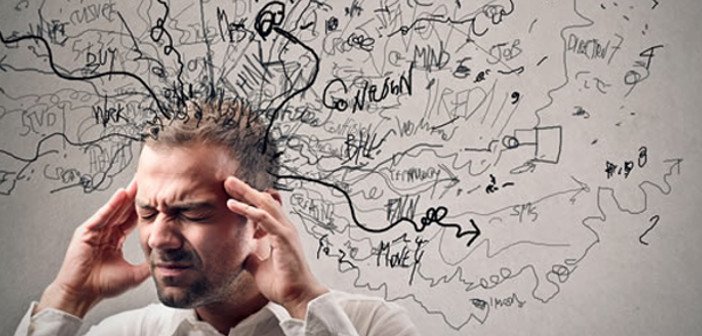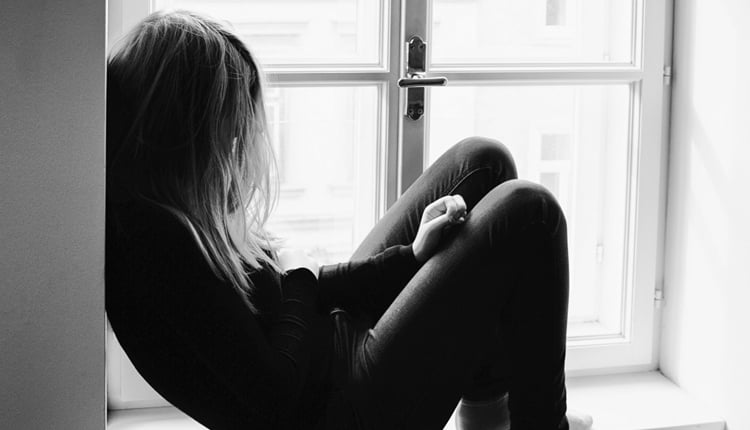What Social Anxiety Actually Looks and Feels Like
People often tell their friends with social anxiety that they should get over their fear because they have nothing to worry about. While this might be objectively true, it likely won’t help them get out of their head or out of the house.
The world has no shortage of misconceptions about people with social anxiety. People may think they’re timid wallflowers, attention seekers or regular introverts. But social anxiety isn’t the same thing as shyness. It’s also not something that a person can switch on or off at their will. And it’s certainly not some sort of selfish character failing.
Social Anxiety Disorder affects much more than how often a person wants to go out for a night on the town. This mental illness pervades a person’s whole life, causing difficulty with work, dating and even commonplace chores.If those affected could “just get over it,” they would do so in a heartbeat.
The debilitating and private nature of social anxiety means that it’s very difficult to understand unless you’ve experienced it. Even so, learning about this specific mental illness and its manifestations can help you find common ground with others, whether you suffer from the disorder or not.
Let’s take a look at what social anxiety looks and feels like.
What Is Social Anxiety Disorder?
Social Anxiety Disorder (SAD) is a chronic mental health condition that causes intense and irrational fear and anxiety in social situations. It can cause sufferers to avoid situations like work or parties due for fear of being embarrassed or judged, and it can even deter people from pursuing their goals and aspirations.
The disorder can be general or specific. People with general social anxiety feel uncomfortable in nearly all social situations, from making a speech to standing in line at the supermarket. People with more specific social phobias, on the other hand, might only get nervous in certain situations, such as when making a phone call or sending an email.
Unlike standard shyness or introversion, social anxiety disorder interferes with day-to-day life. It keeps people from doing things they otherwise enjoy, and it’s sometimes correlated with low performance in work or school, since it’s hard to participate at the best of your ability when you’re constantly worried about the judgment of others.
It’s clear that social anxiety negatively impacts a person’s quality of life if it goes untreated. Despite it’s severe nature, though, social anxiety isn’t as uncommon as people sometimes think. In the United States, SAD affects 6.8 percent of the population, around 15 million adults.

What Are the Symptoms?
Physical, emotional and behavioral symptoms all accompany social anxiety.
In situations that trigger an anxiety response, individuals may experience physical symptoms such as trembling, blushing, increased heart rate, difficulty breathing, dizziness and nausea. Sometimes simply imagining a stressful situation is enough to make someone feel ill.
Emotional symptoms of social anxiety involve fear of being judged, fear of making a mistake or embarrassing oneself, fear of people looking at you and sometimes fear of certain situations, like ordering at a restaurant or talking in front of a crowd.
The emotional and physical distress often leads people to alter their behavior. These behavioral symptoms are most easily recognized by others, though sometimes they’re misinterpreted. People with social anxiety may refuse invitations, cling to familiar people in group situations and go to extreme lengths to avoid the things that cause them anxiety.
People with social anxiety may also develop unhealthy methods of coping with their discomfort. Many people turn to drugs or alcohol to relax around others. In fact, around 20 percent of people suffering from social anxiety also develop alcohol abuse or dependence. Though drinking and drug use can alleviate feelings of anxiety in the moment, they can become even bigger problems over time.
What Is Social Anxiety Like?
Like all mental health disorders, anxiety manifests differently in different people. Some people have very severe symptoms while others may only notice their anxiety flare up every once in a while. It’s impossible to make sweeping generalizations about people with social anxiety. However, it’s fair to say that living with the disorder often feels lonely and exhausting.
Living with social anxiety feels like never being free from fear. It feels like you’re on display and doomed to disappoint. For people suffering from anxiety, no social interaction goes smoothly enough to provide a break from ongoing self-criticism and worry.
For example, this is what social anxiety looks like. Staring at your phone trying to convince yourself to dial a number. Worrying that you’re inconveniencing the store cashier by purchasing too many items. Driving half-way to a party and turning around. Calling in sick to avoid a work presentation. Obsessing over a time you misspoke and wondering if your significant other is only staying because they pity you. And that’s only just a start.

This Isn’t Something to be Ashamed About
Not everyone understands how much anxiety really affects people. However, treatment and support are increasingly available. The most effective treatment is Cognitive Behavioral Therapy (CBT), which helps people change negative thought patterns and practice new behaviors in a safe environment. Working with a good therapist can help socially anxious people start to overcome their patterns.
If you think you may have an anxiety disorder, seek help from a doctor or mental health professional. Though social anxiety may never completely go away, you can significantly decrease your symptoms and stop it from holding you back.
Even if you haven’t experienced social anxiety yourself, learning more can always help you understand other people. So next time you invite out a socially anxious friend, remember how they might be feeling.
